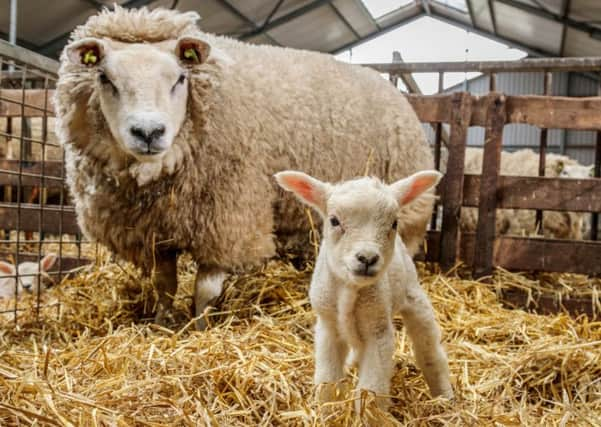Energy and calcium management of the ewe around lambing


Twin lamb disease
Getting sufficient energy into ewes during the last few weeks before lambing can be a challenge, particularly in ewes that are too fat and those carrying multiples. If the ewe’s feed intake is below energy requirements, this is termed negative energy balance. Blood glucose then drops and body fat is broken down for energy, which increases blood ketones. This is termed pregnancy toxaemia, ketosis, twin lamb disease or lambing sickness.
In the early stages of twin lamb disease, a ewe will separate herself from the rest of the flock. In later stages, they may shake, circle, twist their neck, lift their head high, teeth grind and a have a sweet smell from their breath. Ewes near lambing may be weak and experience lambing problems.
Advertisement
Advertisement
Treat ewes with ketosis twice a day with a product containing propylene glycol, along with vitamins and trace elements for the maintenance of liver function, such as Pro-Keto. In severe cases, your vet may inject glucose into the vein.
Prevention of twin lamb disease
Ewes carrying a single lamb are at risk of becoming fat, resulting in a reduced feed and a lower energy intake. In contrast, ewes carrying twins or triplets require a higher energy intake to support the lambs as well as multiple lambs taking up significant space inside the ewe, restricting feed intake.
Identifying ewes carrying twins or triplets by scanning is essential, to provide them with a diet that will meet their higher energy demands. Analyse the silage and use the energy or DMD value to work out how much concentrates you need to feed. The level of nutrition should be gradually increased over the last six weeks before lambing, for example, a 70 kg ewe’s daily requirements increase from 8 MJ to 16 MJ in late pregnancy. Provide enough trough space (15cm/ewe for ad-lib forage and 45cm/ewe for concentrates) and treat any lameness early to prevent this reducing ewe’s intakes. If the ewe’s energy intake is low before lambing, the colostrum may be pale, white and runny, rather than thick and yellow as expected.
Aim to maintain lowland ewes at a body condition score of 3.0 and upland ewes at 2.5 from mid-pregnancy to lambing.
Hypocalcaemia
Advertisement
Advertisement
Hypocalcaemia (low blood calcium) in ewes most commonly occurs one to three weeks before lambing. As milk is produced, calcium demands increase, while at the same time a lower feed intake means a lower calcium supply. Although the body has a store of calcium in the bones, it takes 48 to 72 hours for the body to mobilize calcium into the blood. Therefore, blood calcium levels decrease causing muscle weakness and can occur in multiple ewes at the same time, as mini outbreaks.
Hypocalcaemia looks similar to ketosis, but usually progresses faster. Signs are drowsiness, depression, saliva around the jaw, a stiff or staggering walk, progressing to ewes lying on their chest with the head stretched out and the chin on the ground and in severe cases, unresponsiveness. An injection of calcium into the vein usually results in a rapid improvement.
Prevention of
hypocalcaemia
During the last few weeks before lambing, keep calcium below 1% in the concentrate feed. Provide enough trough space, avoid sudden ration changes and provide extra feed in bad weather. Make sure the diet contains good vitamin D levels as this helps with calcium absorption from the diet. Consider providing a supplement containing energy and calcium, such as Reviva around the time of lambing.